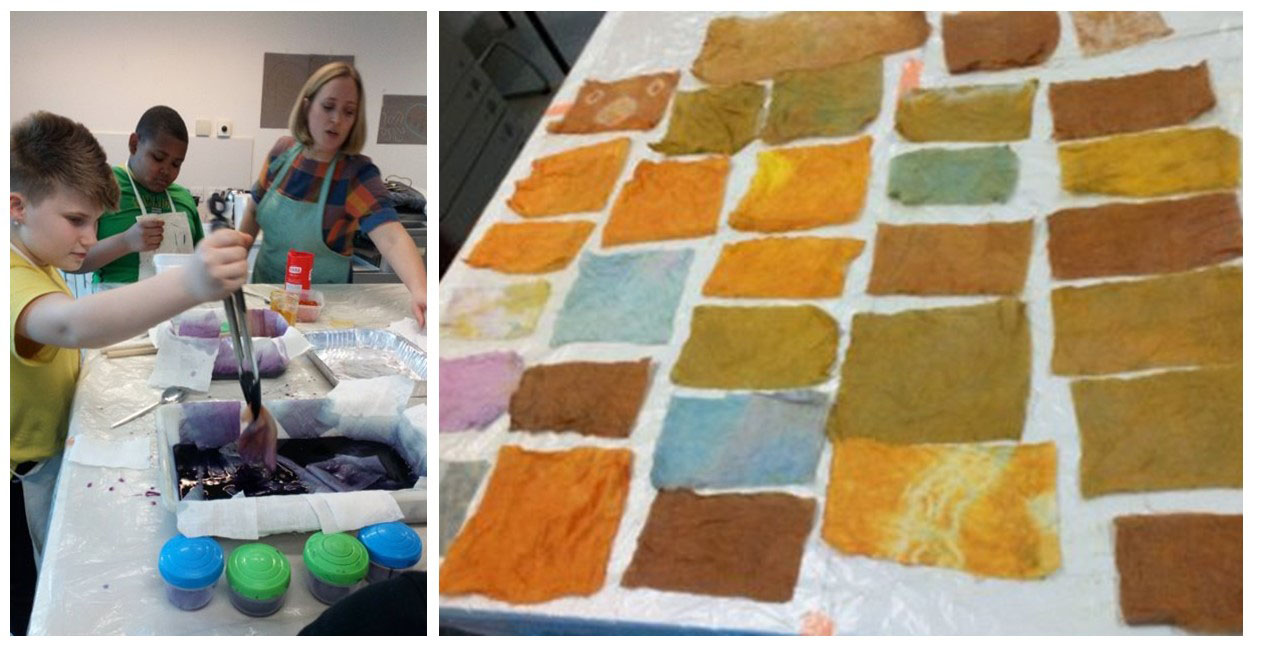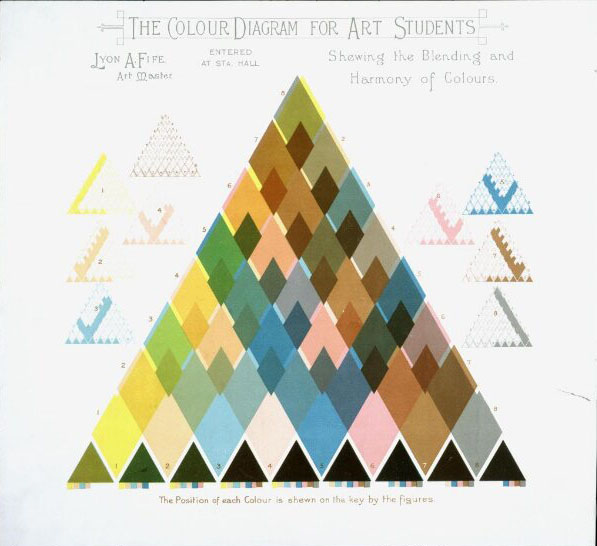As you walk up the stairs to the Design gallery of Young V&A, hung on the wall you’ll see an embroidered quilt dyed gold, deep purple, rich brown and cornflower blue. The quilt was made by the Young V&A collective, a group of 15 young people aged 11 – 22 working together with artist Scott Kyle, textile artist Memunatu Barrie and natural dyer Hanna Whiteman.
Over the course of four days, the group worked between V&A South Kensington and Spotlight youth centre in Poplar to explore making and mending, recycling fashion and collaborating with nature.
On day three, Hanna shared her knowledge of the amazing array of garden plants, wildflowers and foods that can be used to dye fabric. Together, they experimented with turmeric, madder root, red cabbage and safflower.
The result? Piles of deadstock linen dyed with an array of natural and environmentally friendly colours. This colourful linen formed the base of the quilt that now hangs in a display called ‘Design makes things last longer’.
Below, Hanna has shared her knowledge of natural dyeing. Have a go yourself at home!

Sourcing your dye
Your kitchen or local park is filled with natural materials that can be used to dye fabric.
If you’re dreaming of an orange hue for your material, look for ingredients such as carrots, onion skins or paprika.
For yellow, use dandelions, sunflowers, pomegranate skins, turmeric, lemon peels, or peach stones.
To make pink or red, you can experiment with beetroot, lavender, red onions, avocado skins and stones, or even cherries.
You can make a rich purple shade with red cabbage, blueberries, black beans, or blackberries.
For different strengths of green, experiment with spinach and mint leaves.
Or, if you’re aiming for an earthy brown fabric, use walnut shells, tea, or coffee grounds.
Other things you will need
- A white T-shirt made of a natural fabric like cotton, linen or wool.
- A clean, dry pot and water.
- Rubber gloves (or you might have green hands and nails for days!).
- Salt or white vinegar (both salt and vinegar act as a fixative, you can use either to keep your colours fresh).
Top tips
- Ask an adult for help with boiling water.
- Think about working outside if you can.
- Try mixing your colours to make new ones.
- Experimentation is key!

How it works:
- If you’re using fruit to dye fabric, add 1L water and 250ml white vinegar to a saucepan.
If you’re using vegetables, leaves or herbs to dye fabric, add 2L water and 65g salt to a large saucepan. - Add your fabric to the pot. Put the pot on the hob and simmer the mixture gently for one hour.
- Remove the fabric from the saucepan and squeeze excess water from it. Rinse the fabric well in cold water.
- Put 350g of your fruit or veg in a saucepan. Add 1L water. Bring to the boil.
- Add your fabric and simmer gently for 20 minutes. Take the saucepan off the hob. If you want a darker colour, leave your fabric to soak in the dye overnight.
- Wring out the excess water and rinse your fabric in cold water. Leave to dry.
Why not experiment with tie-dyeing your fabric? Or, try growing some plants from seed and harvesting them for dye.
This post forms part of the display ‘Design makes things last for longer’ in the Young V&A Design gallery. Find out more about the project.



What are some effective strategies for collaborating with nature to mitigate climate change?
Teknik Komputer does not make a comment but asks a question, presumably referring to the title of the article. In fact, the account of fabric-dyeing using plants etc is interesting and the activities sound fun. Hardly ‘collaborative with nature’ though; more like using traditional knowledge and well-tried techniques to create attractive colourful fabrics. Nothing especially collaborative here apart from being busy with other humans!